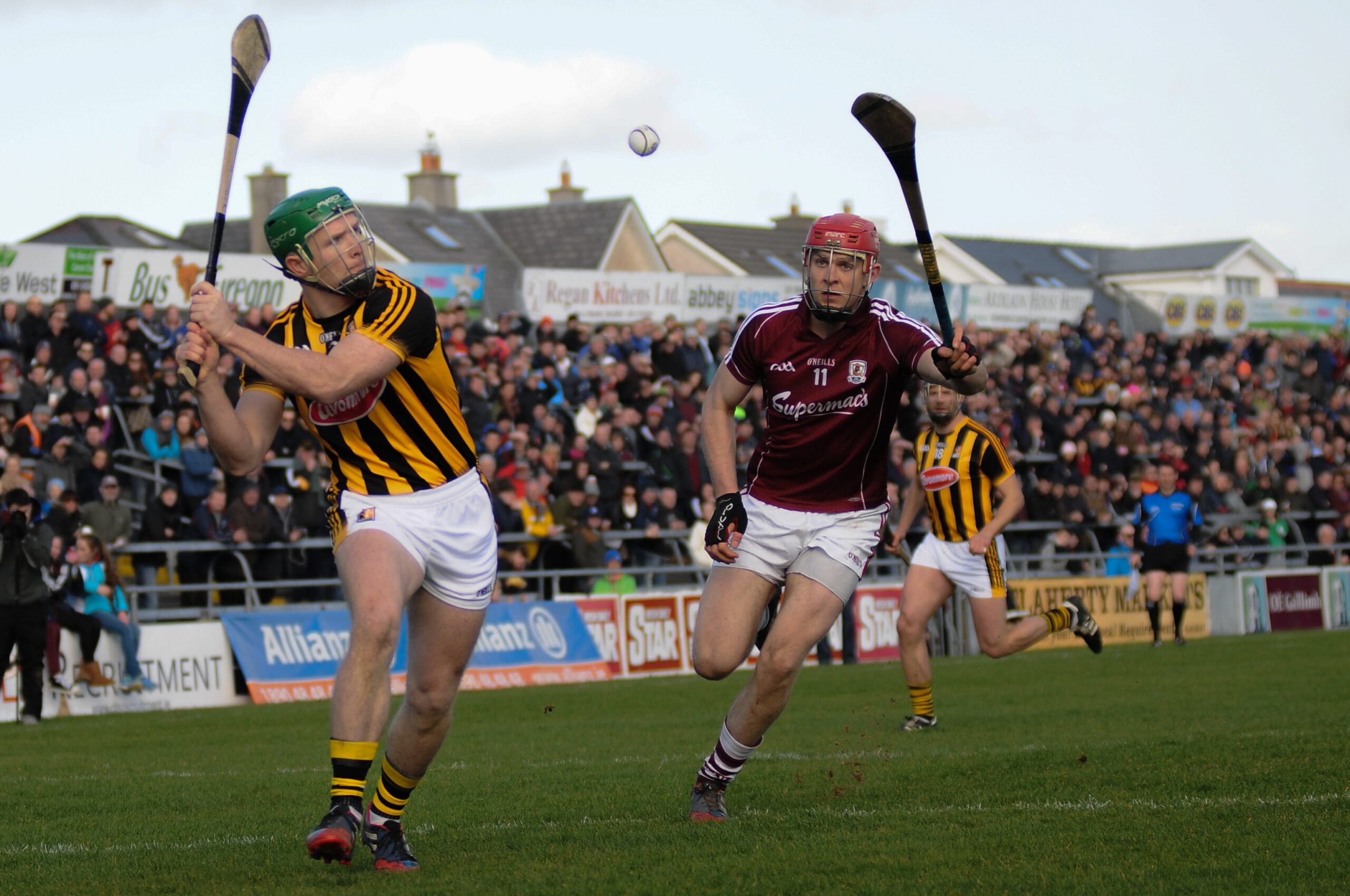Hurling is one of the most popular sports in Ireland with many considering it the national sport.
The game is so old that it predates recorded histories of Ireland and it existed well before the GAA, the body which regulates and organises hurling, ever existed!
It is competed across club and county lines throughout Ireland, for children and adults, and both men and women, although the female version of hurling is commonly known as Camogie.
Whether you’re planning on playing, catching a game when you’re in Ireland, or simply just curious, let’s dig into the details below…
What is Hurling?
Hurling has existed for centuries and is closely related to other Celtic stick-ball games found around the British and Irish isles.
Hurling Equipment
Before we get onto the game’s rules, let’s first look at what’s needed to play it:
- Hurley: This is also called a Hurling Stick. The stick is made of ash, normally measures 20-38 inches in length, and features a slim handle (usually wrapped in a grip) and a broad flat end (bas) which is used to strike or pick up the ball.
- Sliotar: The Sliotar is another name for the ball. It’s usually made of leather, and it’s similar in size to a tennis ball or baseball.
- Helmet: Helmets became mandatory from 2010 onwards.
Rules of Hurling
Hurling, like other field sports, consists of a goals and points-based scoring system. The field is marked at the 14, 21 and 65 yard lines, and features a H-shaped goal at either end with posts extending up beyond what can look like traditional soccer/football goals.
The scorer of a goal (between the posts and below the crossbar) gets 3 points for their team, and the scorer of a point (between the posts and above the crossbar) gets 1 point for their team. If a team scored 1 goal followed by a point, they would have 4 points in total.
Each game consists of 15 players and two 35-minute halves at inter-county level, and 30-minute halves for club level. Both the goal and field dimensions are exactly the same as they are for Gaelic football. That means both Hurling and Gaelic can be played immediately after one another.
Players can not pick the Sliotar up from the floor with their bare hands. If it’s on the ground, they need to use their stick to pick it up. However, once they’ve picked it up, they can take it from the stick with their hands. The most common methods of picking up the Sliotar are the jab lift (scoop) and the roll lift (roll then scoop).
If you wish to pass the Sliotar to another player, you cannot throw it like you can throw a ball in catch. Instead, you can either flick it with the hurley or use your hurley to flick it into the air, then hand pass it to another player with an open palm.
You can also run while holding the ball, but not for more than 4 steps. And you can only handle it twice before passing it on to someone else.
If another player passes you the Sliotar, you can catch it with your hands and kick it along the ground. Again, no more than 4 steps.
If a player breaks a rule, the opposing team can be rewarded a “Puck”, the hurling equivalent of a free kick in soccer.
Shoulder-to-shoulder contact is permissible, but only under certain circumstances. For example, to prevent the opposing team from stealing the Sliotar.
The History of Hurling
The history of Hurling is embedded within Ireland’s history.
As we’ve mentioned, the sport is even older than the country itself, with many historians believing it started in the 5th century. To put that in context, this would’ve been around the time of St Patrick!
The Celts inhabited Ireland, with the Romans having left just a few centuries before.
The official modern version of the game began life in 1879, when the first attempts at a formalised version (meaning the rules written down) were made at Trinity College Dublin. This was followed soon after by the formation of the Gaelic Athletic Association in 1884 in Thurles, County Tipperary.
Famous Hurling Counties
In Ireland, Hurling is competed at both club and county level.
Club level refers to clubs that exist within cities, towns, villages and townlands throughout Ireland and Northern Ireland. These clubs compete at various levels, in both league and championship games. Championship games pit clubs together in a bid to win their county championship. If a club wins a county championship, they will then attempt to win a province championship and if successful, compete to win a club All-Ireland championship.
County level, also known as inter-county, hurling is similar in that counties compete in both league and championship games, but in the latter the aim is to win an All-Ireland championship.
The three most successful counties currently are Kilkenny, Cork, and Tipperary.
At the time of writing, Kilkenny currently have 36 All-Ireland championships to their name, Cork have 30 and Tipperary have 28.
Regardless of who you go to watch, be it a club game or inter-county, you’ll be in for a treat and a quint-essential Irish experience.

